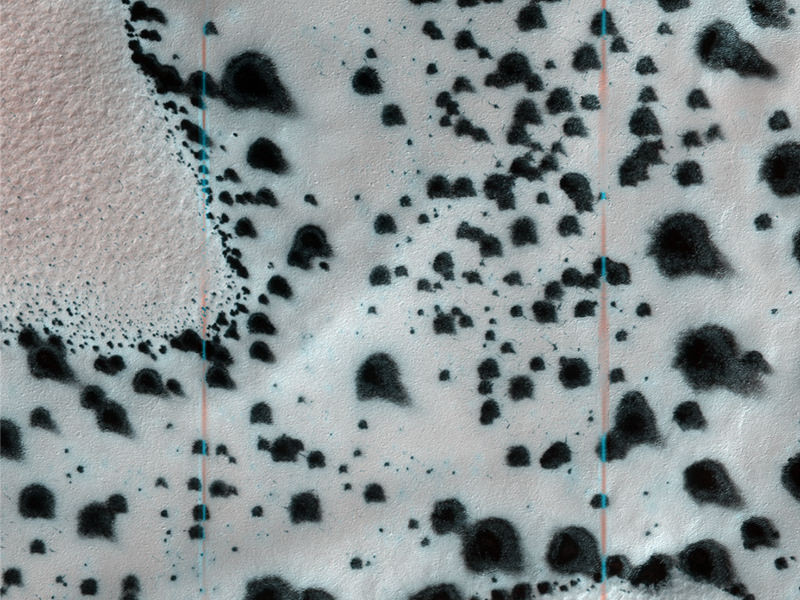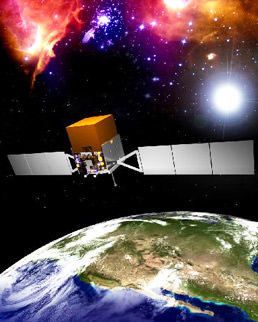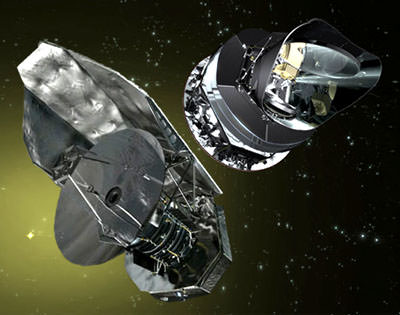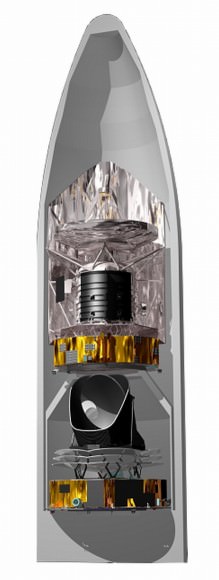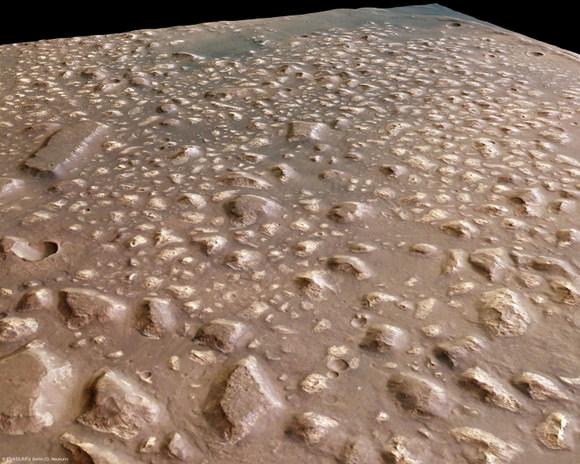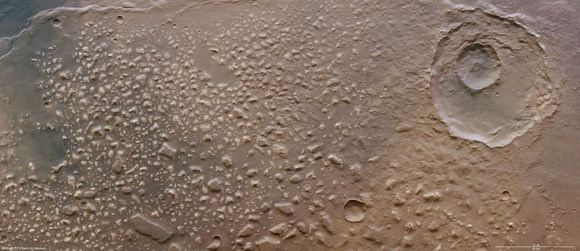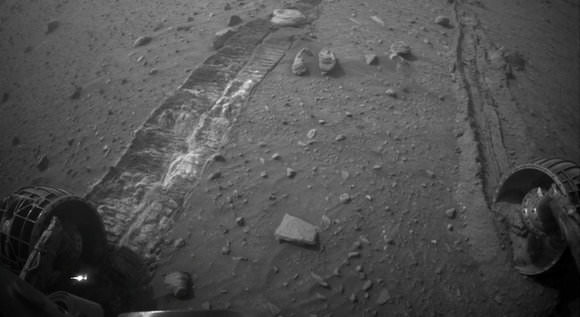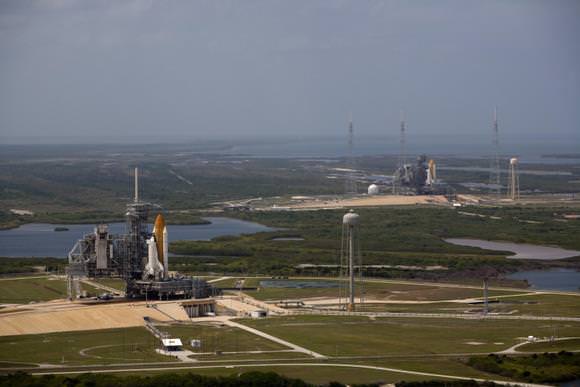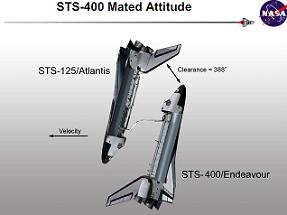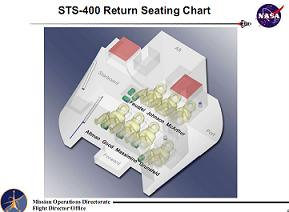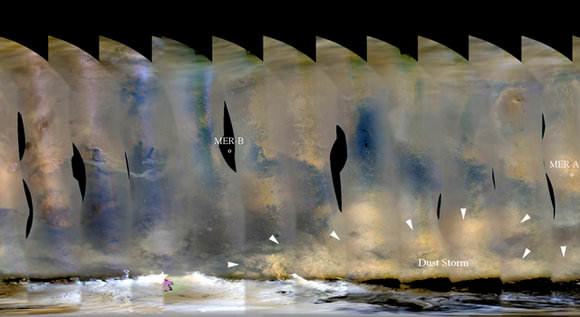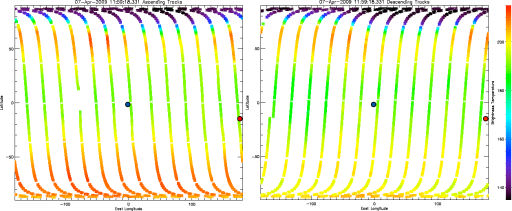[/caption]
Malea Patera isn’t the name of one of the One Hundred and One Dalmatians, but it is the designation of an ancient volcano on Mars located on the outskirts of the Hellas impact basin. This isn’t your typical Martian landscape — just where are the red rocks and soil? — but is reminiscent of the markings on a Dalmatian dog. So what is going on here? This image was taken in early spring for this location in the southern hemisphere and the ground is covered with bright frost except for some dark splotches found in discrete patches. This is where the sunlight has penetrated the frost and initiated defrosting around discrete spots. The HiRISE scientists say that clearly, something is different about the patches, with the defrosting taking place, while the other areas remain frosty. One possibility is that these are (frost covered) dark sand dunes that heat up more easily than the surrounding terrain. However, to find out for sure, HiRISE will need to take a new image in the summer time to really know what is happening here. See below for a full view of this region, plus a few more of a mega-huge batch of images that were released today from the HiRISE camera on the Mars Reconnaissance Orbiter.
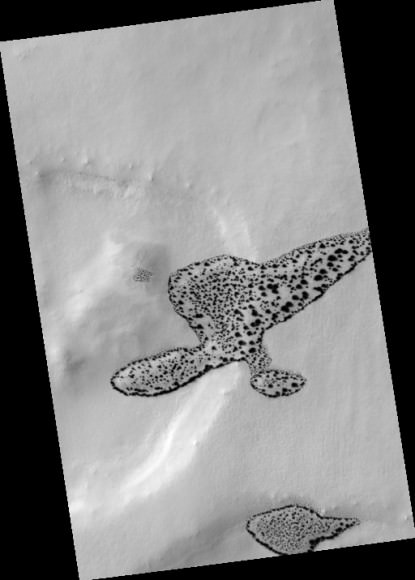
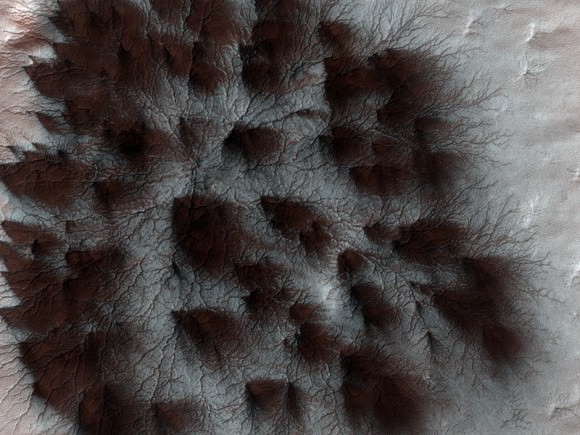
We move from dogs to spiders, but this, too is an unusual Mars image. Mars’ seasonal cap of carbon dioxide ice (dry ice) has eroded to create many beautiful terrains as it sublimates every spring. In this region we see troughs that form a starburst pattern.
In other areas these radial troughs have been referred to as “spiders,” simply because of their shape. In this region the pattern looks more dendritic as channels branch out numerous times as they get further from the center. The troughs are believed to be formed by gas flowing beneath the seasonal ice to openings where the gas escapes, carrying along dust from the surface below. The dust falls to the surface of the ice in fan-shaped deposits.
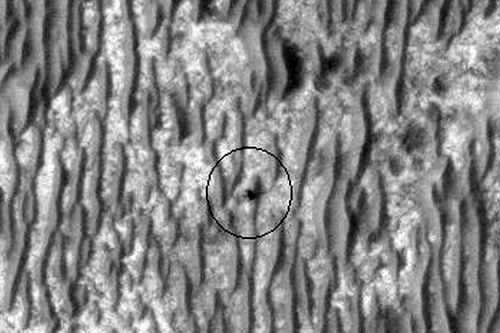
HiRISE spied the Opportunity rover heading through the dunes of Meridiani Planum. This image is about 400 meters across and was taken on January 29, 2009, Opportunity’s 1783rd sol (Mars day) on the Red Planet. Opportunity had driven 130 meters on the previous sol; wheel tracks are visible crossing dark ripples to the upper right of the rover. The ripples, which trend mostly north-south in this area, can be easily crossed by the rover unless they are very large (such as those right of center).
Using the HiRISE images allows the MER scientists to plan out Oppy’s route in great detail, avoiding potential hazards and targeting features of interest (such as the small craters below and left of center). HiRISE images are routinely used by the Opportunity operations team for these purposes, and to plan the route to distant Endeavour Crater, the long-term goal of Opportunity’s mission, about 17 km to the southeast.
Opportunity has been exploring Mars for over 5 (Earth) years; it will probably take another two years to reach Endeavour.
Check out over 600 observations that were just released by the HiIRISE team — 2 terabytes worth of data! And all are Martian eye candy (or is that “Hi” candy?) Hats off to HiRISE and her team!
Source: HiRISE site

